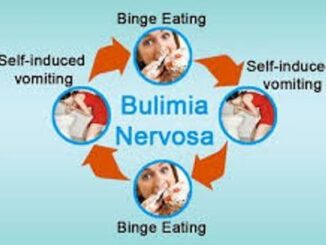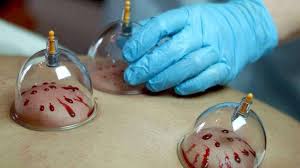
Digestive System:
All organs of the digestive system are responsible for getting food into and out of the body and making use of food to stay the body healthy and energetic.
Digestion Process:
In digestion process, there are four steps that are –
- Ingestion,
- Mechanical and chemical breakdown of food,
- Nutrient absorption,
- Elimination of indigestible food.
The main constituent of the digestive system is the alimentary canal which is 10mts long.
It has the following parts:
Organs of Digestive System:
Mouth: It has 3 main parts connected with digestion.
- Tongue: This organ accepts taste. It helps in chewing, swallowing, and talking.
- Teeth: These are for eating, chewing, and grinding our food.
- Salivary glands: They are exocrine glands that produce saliva in the oral cavity. They secrete an enzyme called amylase, which helps in the breakdown of starch into maltose. There are three types of salivary glands, namely:
1. Parotid gland 2. Submandibular gland 3. Sublingual gland
Pharynx:
It is a 12 cm tube which transfers food from the mouth to the food pipe.
Oesophagus:
This is a tube connected with pharynx which opens up down in the stomach. Through this food reaches the stomach.
Stomach:
The oesophagus leads to a sac-like organ called the stomach. It is a hollow muscular organ, having a capacity of approximately 1000cc. The stomach holds food and mixing, grinding the food.
In the walls of the stomach, there are gastric glands which secrete gastric juices containing hydrochloric acid which makes the food acidic.
Gastric glands secrete 3 types of enzyme
- Pepsinogen: (In presence of HCL )
Pepsinogen coverts into Pepsin.
Pepsin converts protein into Peptone.
Peptone is made of amino acid and it is easily soluble.
2. Rennin: It converts soluble protein caseinogen into casein, which is an insoluble milk protein.
3. Gastric lipase: This enzyme dissolves fats and starts hydrolysis in them.
Small intestine:
The small intestine is a long tube, which loosely coils in the abdomen area. Inside the small intestine, enzymes from the pancreas and bile from the liver further break down the food. Small intestines are made of three segments that are the duodenum, jejunum, and ileum.
After reaching the small intestine the food gets mixed with pancreatic juices, bile created by the liver is stored in the gall bladder. Intestinal juices secreted by intestinal walls.
There are 3 types of enzymes in the pancreatic juices:
- Amylase: It digests carbohydrates, which are converted into maltose.
- Trypsin: It digests proteins, which are converted into amino acids
- Lipase: It digests fats, which are converted into fatty acids and glycerol.
The acidic food received from stomach to duodenum gets mixed with pancreatic juices and bile and becomes alkaline.
Intestinal juices have the following enzymes-:
- Enterokinase: This activates inactive trypsinogen present in pancreatic juices and converts it into trypsin, this digests proteins.
- Erepsin: This converts protein into amino acids.
- Sucrase, lactose, and maltase: They digest carbohydrates and convert it into glucose, fructose, galactose and dextrose.
Large intestine:
The large intestine is a long muscular tube that has different parts, which are caecum, colon, and rectum. It is 1.5mtr long and much broader than the small intestine. The large intestine gets the remaining part of the food, which is waste and is in the form of fluid.
Rectum:
When rectum gets filled with faeces then the urge to defecate arises.
Anal canal: From this faeces is defecated.
Pancreas:
This is a 12cm to 15cm long gland which is situated behind the stomach and extended from duodenum to the spleen.
Functions of the pancreas-:
- It is an exocrine gland, which secretes pancreatic juices to digest the food.
- In the pancreas there is a group of cells scattered around called Islets of Langerhans. They are endocrine glands which secrete insulin hormone.
Liver:
It is one of the largest organs in the body. It is present in the uppermost part of the abdominal cavity on the right side below the diaphragm. It is mostly protected by the ribs and diaphragm.
It is a metabolically active organ and biggest biochemical factory in the body. It performs most of the intermediate metabolic activities.
Functions of the liver-:
- It secretes the bile about 800- 1000 ml per day.
- It synthesizes glycogen from the glucose derived from the carbohydrate presentation in the food. It is stored temporarily in the liver and converted back into the glucose when needed by the body.
- It separates the amino group (NH2) from amino acid derived from protein in the food and converts them into ammonia which is then converted into urea. Urea is removed and excreted in the urine through kidneys.
- It stores the fat and utilizes when needed.
- It stores the iron and vitamin B12, A, D and K.
- It synthesizes plasma proteins.
- It also synthesizes prothrombin and fibrinogen, which are necessary for clotting of blood.
- It synthesizes Heparin which is the natural anticoagulant.
- It is the main organ to produce heat in the body.
- It inactivates toxic metabolites.
- It synthesizes blood in the intrauterine development of the foetus.
- It disintegrates the products of the breakdown of haemoglobin into the bile which are eliminated in faeces.
- It synthesizes cholesterol as well as lipoproteins for the transport of fat to other body tissues.
Gall bladder:
It is a pear-shaped bag like organ which is situated under the liver. It measures 8-10 cm in length and its holding capacity is about 60-100 ml.
Functions of gall bladder:
- Gall bladder stores bile and also concentrates it. Bile is a liquid secreted by the liver cells.
- The main function of the bile is to emulsify the fats and to help in their digestion.




Very good and effective information